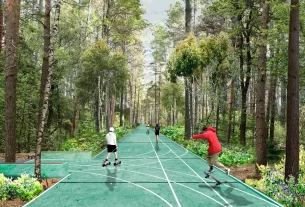
Sustainable Practices in Sports Equipment Manufacturing: The Game is Changing
For decades, the world of sports equipment was all about performance at any cost. Lighter, stronger, faster—no matter the environmental toll. The materials were often petroleum-based, the manufacturing processes energy-intensive, and the end-of-life plan was, well, a landfill.
But the game has changed. A new wave of innovation is sweeping through factories and design studios, driven by a powerful shift in consumer consciousness. Today, the most exciting plays aren’t just happening on the field; they’re happening in the labs and supply chains of forward-thinking brands. Let’s dive into how sustainable practices are completely reshaping how our gear is made.
Beyond the Bin: A Deeper Look at the Problem
It’s easy to see the finished product—the sleek running shoe, the crisp tennis racket. But the real environmental impact is hidden in the supply chain. Honestly, the traditional model was pretty linear: take, make, dispose. We took virgin resources, made them into short-lived products, and then tossed them. The carbon footprint of sports equipment manufacturing was, and in many cases still is, significant.
The Material World: Where the Magic (and the Mess) Happens
This is where the biggest battles are being won. The quest for sustainable materials in sports equipment is a full-on innovation marathon.
First up, recycled content. We’re seeing an incredible surge in the use of recycled polyester (rPET) from plastic bottles in jerseys, shorts, and even shoe uppers. It’s a no-brainer. And it’s not just soft goods. Some companies are now using recycled aluminum for bike frames and water bottles, and even recycled carbon fiber scraps are being repurposed.
Then there’s the bio-based revolution. This is where it gets really cool. Imagine soccer cleats grown from mycelium (mushroom root), or skateboard wheels made from algae oil instead of petroleum. These aren’t sci-fi concepts; they’re real products hitting the market. These natural and renewable materials drastically cut down on the reliance on fossil fuels.
And we can’t forget about natural materials making a comeback. Sure, cork has been in yoga blocks for ages, but now it’s being used for insoles and helmet liners for its lightweight and shock-absorbing properties. Bamboo is another star—it’s incredibly fast-growing and strong, making it perfect for skateboard decks and even high-performance badminton rackets.
It’s Not Just What You Use, But How You Use It
You can have the greenest materials on the planet, but if your manufacturing process is wasteful, you’re only solving half the problem. That’s why the focus has expanded to the entire production lifecycle.
Energy efficiency is a huge one. Factories are investing in solar and wind power to run their operations. They’re also optimizing processes to use less water and fewer harsh chemicals, especially in dyeing fabrics. The goal is a net-zero carbon footprint for the entire operation, which is a massive but crucial undertaking.
Then there’s waste reduction. The circular economy in sports equipment is the ultimate goal. Instead of the linear “take-make-waste” model, we’re moving towards a loop. This means designing products from the start to be disassembled and their materials to be reused or recycled. It means offering robust repair services to extend a product’s life. And, when a product truly reaches its end, having a clear take-back program so its materials can live on in something new.
The Real-World Playbook: Who’s Doing What
Okay, so this all sounds great in theory. But what does it look like in practice? Here are a few standout examples of sustainable sports equipment brands and initiatives:
| Brand / Initiative | Sustainable Practice | Product Example |
| Adidas x Parley | Upcycling marine plastic waste | Running shoes & apparel |
| Salomon | Designing ski boots for disassembly & recycling | Index.01 Ski Boot |
| Wesley Tyler Golf | Crafting clubs from sustainably sourced wood | Custom drivers & putters |
| Bureo | Using recycled fishing nets | Skateboards & sunglasses |
The Hurdles on the Track: Challenges in Sustainable Manufacturing
It’s not all smooth sailing, of course. Transitioning to fully sustainable models is tough. The number one challenge? Cost. Researching, developing, and sourcing new materials is expensive, and that cost often gets passed to the consumer, making eco-friendly gear a premium option.
Performance is another huge hurdle. An eco-material isn’t any good if it can’t withstand the rigors of the sport. A running shoe made from algae foam still needs to provide cushioning and rebound for hundreds of miles. The R&D to match or exceed the performance of traditional materials is immense.
And then there’s the issue of greenwashing. Some brands make vague claims about being “green” or “eco-friendly” without the substance to back it up. This is why transparency—like publishing detailed impact reports—is so, so important.
The Final Whistle: What It All Means
So, where does this leave us? The shift towards sustainable practices in sports equipment manufacturing is more than a trend; it’s a fundamental rethinking of an entire industry. It’s a move away from a disposable culture and towards one of responsibility and regeneration.
The next time you lace up your shoes or grip your racket, you might just be holding a piece of the future—a future where high performance doesn’t have to cost the Earth. The race is on, and honestly, it’s one we all need to win.







